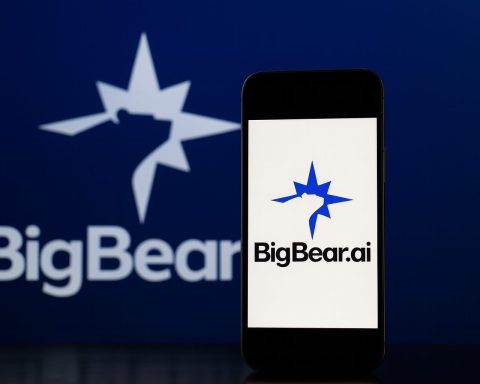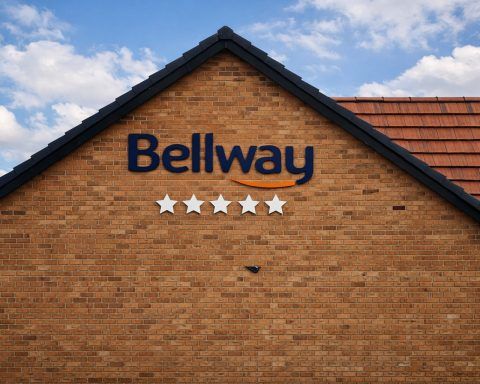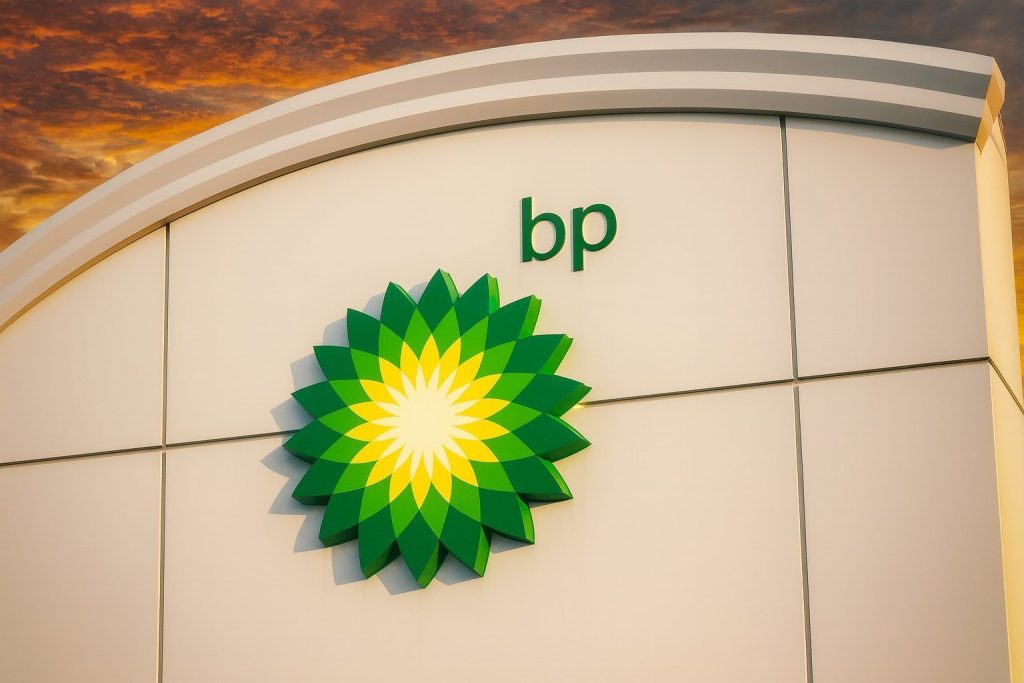London, 26 November 2025 – Unilever PLC (LON: ULVR) is back in focus today as investors weigh a flurry of strategic moves: a cut‑price disposal of the Graze snack brand, fresh marching orders for Hindustan Unilever (HUL) to chase higher‑margin growth, mixed sentiment on the upcoming Magnum ice‑cream spin‑off, and ongoing portfolio pruning that could see iconic British brands like Marmite change hands.
Below is a rundown of the key developments driving Unilever news and the ULVR share price today.
Unilever share price today: ULVR edges lower despite bullish broker call
By mid‑morning in London, Unilever shares were trading around 4,525p, down about 0.6% from Tuesday’s close of 4,552p, according to real‑time estimates from MarketScreener. [1]
That latest move leaves the stock:
- Not far below its recent 52‑week high of 4,910p and above the 4,311p low, signalling a modest recovery through 2025. [2]
- Roughly flat year‑to‑date on the London market, with a dividend yield around 3.3–3.5%, depending on the listing and data source. [3]
On the Amsterdam exchange, Unilever PLC (UNA:AMS) was recently quoted close to €51.9, down about 0.6% on the day and around 5.5% lower year‑to‑date. [4]
Despite today’s softer share price, analysts are far from united:
- Rothschild Redburn today raised its price target on Unilever to £53.50 from £52.00 and reiterated a Buy rating, citing the upcoming ice‑cream demerger and a productivity plan to offset stranded costs as signs of “ongoing positive change” at the group. [5]
- Several major banks, including J.P. Morgan, Barclays and Bernstein, have maintained or reiterated Buy ratings over November. [6]
- RBC Capital Markets, however, still has the stock at Underperform after a downgrade in January, with a lower 4,000p price target that underlines lingering scepticism about execution and growth. [7]
For investors, that means the ULVR story today is less about dramatic price moves and more about how a wave of strategic decisions will reshape the business over the next 12–18 months.
Cut‑price Graze sale highlights aggressive portfolio clean‑up
The biggest headline today is a planned disposal of Graze, the UK healthy‑snacks brand Unilever bought in 2019:
- Katjes Group, the German confectioner that owns Candy Kittens, is in advanced talks to buy Graze for about £35m, according to Sky News. [8]
- That price is little more than 20% of the roughly £150m Unilever originally paid – a steep discount that suggests Graze has underperformed under Unilever’s ownership. [9]
Sky’s reporting notes that new CEO Fernando Fernandez put Graze up for sale earlier this year after disappointing performance, and that the move sits alongside a wider sale process for vintage British brands Marmite, Bovril and Colman’s, reported last week. [10]
Reuters has previously reported that the potential sale of Marmite, Bovril and Colman’s could fetch around £200m in annual revenue terms, as Unilever exits some non‑core food businesses to focus on higher‑growth beauty and wellbeing categories. [11]
Why it matters for ULVR:
- The Graze deal shows Fernandez is willing to take a hit on legacy acquisitions to simplify the portfolio and refocus capital on faster‑growing brands. [12]
- Together with the proposed Marmite/Bovril/Colman’s sale and earlier disposals like The Vegetarian Butcher, it underlines a clear pivot away from long‑tail food brands and towards premium personal care, beauty and “power brands”. [13]
India: Unilever tells HUL to pursue high‑margin, premium growth
In India, Unilever’s largest emerging‑market profit engine, the group is tightening its strategic screws.
A report in The Economic Times and follow‑up coverage from Storyboard18 and Adgully describe how CEO Fernando Fernandez, during a town hall on his India visit, told employees at Hindustan Unilever Ltd (HUL) that volume growth alone will no longer be enough in a fiercely competitive market. [14]
Key messages from Fernandez’s India tour:
- HUL has been urged to tilt harder into higher‑margin, premium portfolios, not just chase rural volumes. [15]
- The company must ramp up its presence in “new‑age channels” – quick commerce, digital distribution and modern trade – as Indian consumers increasingly shop online and via instant‑delivery apps. [16]
- Fernandez visited Tier‑II cities such as Lucknow, meeting distributors and pushing for deeper penetration across HUL’s already vast rural network. [17]
HUL already commands strong market shares – above 50% in categories like haircare, skincare, dishwash and functional foods, and roughly 45% in laundry – backed by a distribution network reaching around nine million outlets, including three million served directly. [18]
In its recent Q2 FY26 commentary, HUL management laid out a four‑pillar strategy based on:
- Volume‑led but profitable growth
- Sharper consumer segmentation into “Power Spenders”, “Premiumisers” and “Democratisers”
- Accelerated push into digital and quick commerce
- Portfolio reshaping with disproportionate investment in high‑potential categories. [19]
HUL reported a 3.8% year‑on‑year rise in consolidated net profit to ₹2,694 crore in Q2 FY26, giving Fernandez some room to push for margin upgrades without derailing growth. [20]
For ULVR shareholders, this matters because India is one of Unilever’s highest‑return markets; a shift towards premiumisation and digital channels there supports the group‑wide narrative of boosting margins and accelerating growth in beauty and personal care.
Magnum spin‑off: upbeat narrative, but not everyone is convinced
The other major theme around Unilever today is the looming spin‑off of its ice‑cream arm, The Magnum Ice Cream Company (TMICC).
Listing date and investment plans
A detailed feature from Reuters earlier this week confirmed that Magnum is preparing for a December 8 listing in Amsterdam, following earlier timetable revisions driven by the U.S. government shutdown and SEC registration delays. [21]
Key points from Reuters’ reporting on the spin‑off:
- Magnum will list as an ice‑cream pure play, housing brands such as Magnum, Ben & Jerry’s, Cornetto, Solero and Viennetta. [22]
- The company is investing £50m in its Gloucester factory in the UK as part of a €350–380m supply‑chain revamp to support the demerger and boost capacity by 50% by 2027 versus 2023. [23]
- Management acknowledges the challenge posed by GLP‑1 weight‑loss drugs but is betting on continued demand for “indulgent” treats, alongside new lower‑sugar and high‑protein options. [24]
Unilever is expected to retain a 19.9% stake in the ice‑cream business post‑listing, keeping some exposure while freeing up the core group to focus on higher‑growth segments. [25]
Analyst split: UBS sceptical, Redburn supportive
Not all analysts are enthusiastic:
- A fresh note highlighted by Proactive Investors reports that UBS “is not buying the excitement” around the soon‑to‑list Magnum unit, signalling concerns about valuation and the long‑term impact of health trends on a sugar‑heavy portfolio. [26]
- By contrast, Rothschild Redburn’s target hike to £53.50 today explicitly cites the planned demerger and a detailed productivity plan as reasons to stay positive on Unilever shares. [27]
In other words, investors face a classic event‑risk trade‑off: the spin‑off could unlock value if Magnum attracts a strong multiple as a focused consumer brand – but it also introduces execution risk and heightens ULVR’s dependence on faster‑growing beauty, wellbeing and personal care franchises.
Sustainability and governance: from boardroom changes to Bangladesh’s youth
Unilever’s transformation isn’t just about brands and listings; it reaches into the C‑suite and on‑the‑ground sustainability programmes as well.
Chief Sustainability Officer transition
Earlier this month, Rebecca Marmot stepped down as Unilever’s Chief Sustainability Officer after nearly two decades with the company. She is being succeeded in sustainability leadership by Michael Stewart, who joined as Chief Corporate Affairs and Communications Officer after a stint at PwC. [28]
The change comes amid a significant restructuring that includes:
- Spinning off the ice‑cream business into Magnum
- Cutting roughly 25% of the group’s top 200 leadership roles
- Eliminating about 7,500 jobs worldwide as part of a broader productivity drive. [29]
Marmot’s tenure saw Unilever commit to net‑zero across its value chain by 2039 and achieve a 70% reduction in Scope 1 and 2 emissions by 2023 versus a 2015 baseline, partly through renewable electricity and energy efficiency measures. [30]
Unilever also used its presence at COP30 in Belém, Brazil this month to call for stronger national climate plans that support sustainable business growth, underlining that climate and portfolio strategy are now tightly linked. [31]
Local ESG activity: youth‑led action in Bangladesh
At the grassroots level, Unilever Bangladesh today highlighted progress in a partnership with YPSA (Young Power in Social Action) and Chattogram City Corporation:
- The Youth Champions of the Environment 2025 event in Chattogram brought together 200 young people focused on environmental sustainability and waste management. [32]
- Since 2022, the partners have collected and recycled over 30,000 tonnes of plastic waste, using a value‑chain‑based model that aims to improve livelihoods and working conditions for waste workers. [33]
While initiatives like this are small in financial terms, they reinforce Unilever’s efforts to keep ESG credentials front‑and‑centre as it reshapes the business and faces increasing scrutiny of its sustainability claims.
Emerging markets & Africa: board reinforcement in Nigeria
In Nigeria, the group has also moved to strengthen its local leadership:
- Unilever Nigeria Plc has appointed Mr. Uchenna Nwakanma as an Executive Director effective 13 November 2025, according to a filing published yesterday. [34]
- Nwakanma currently serves as R&D Director for Personal Care across Unilever’s Africa cluster, with over 20 years’ experience in home and personal care innovation and a track record at PZ Cussons and Reckitt Benckiser. [35]
- He is described as a strong advocate of sustainable manufacturing and local value creation, working closely with Nigeria’s Standards Organisation (SON) and the Manufacturers Association of Nigeria. [36]
The appointment underlines Unilever’s determination to reinforce product innovation and localisation in African markets, which are increasingly important for long‑term volume and margin growth.
How today’s news fits into the bigger ULVR investment story
Taken together, the 26 November 2025 news flow paints a picture of a more focused but more complex Unilever:
- Portfolio sharpening is accelerating
- The cut‑price Graze sale and potential disposal of Marmite, Bovril and Colman’s show a CEO prepared to exit underperforming assets and simplify the portfolio – even if that means crystallising losses on past deals. [37]
- Growth is being re‑oriented towards premium and digital
- In India, Fernandez is clearly signalling that premiumisation and new‑age channels (quick commerce, e‑commerce, modern trade) will be as important as raw volume, particularly for Hindustan Unilever. [38]
- Magnum spin‑off is the defining near‑term catalyst
- The December 8 listing will test investor appetite for an ice‑cream pure play in a more health‑conscious world. Bulls see potential value unlock and cleaner margins at the remaining Unilever; bears worry about timing, GLP‑1 headwinds and the risk of a tepid reception. [39]
- ESG and governance remain core to the brand
- Leadership changes in sustainability, COP30 advocacy and on‑the‑ground programmes like the Chattogram plastic‑waste initiative all point to Unilever trying to preserve its ESG credentials while it cuts costs and restructures. [40]
- Valuation sits between scepticism and optimism
- A cluster of Buy ratings and today’s price‑target upgrade suggest many analysts see upside from current levels, while earlier downgrades and UBS’s caution on Magnum show that not everyone is convinced the turnaround will deliver quickly enough. [41]
For now, ULVR remains a steady, dividend‑paying consumer giant in the middle of a major strategic pivot. Today’s news – from the Graze sale to HUL’s premium push and the fast‑approaching Magnum spin‑off – will be key inputs for investors trying to decide whether that pivot will translate into faster growth and higher margins, or simply more moving parts to manage.
This article is for information only and does not constitute investment advice. Always do your own research or consult a qualified adviser before making investment decisions.
References
1. www.marketscreener.com, 2. www.hl.co.uk, 3. www.hl.co.uk, 4. www.marketscreener.com, 5. in.investing.com, 6. www.marketscreener.com, 7. www.voxmarkets.com, 8. news.sky.com, 9. news.sky.com, 10. news.sky.com, 11. www.reuters.com, 12. news.sky.com, 13. www.reuters.com, 14. www.storyboard18.com, 15. www.storyboard18.com, 16. www.storyboard18.com, 17. www.storyboard18.com, 18. www.storyboard18.com, 19. www.storyboard18.com, 20. www.storyboard18.com, 21. www.reuters.com, 22. www.reuters.com, 23. www.reuters.com, 24. www.reuters.com, 25. www.reuters.com, 26. www.proactiveinvestors.co.uk, 27. in.investing.com, 28. www.esgdive.com, 29. www.esgdive.com, 30. www.esgdive.com, 31. www.unilever.com, 32. www.tbsnews.net, 33. www.tbsnews.net, 34. www.thecable.ng, 35. www.thecable.ng, 36. www.thecable.ng, 37. news.sky.com, 38. www.storyboard18.com, 39. www.reuters.com, 40. www.esgdive.com, 41. www.marketscreener.com










